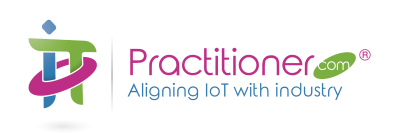The Internet of Things (IoT) can be seen as a series of connected devices. From wearables like watches, through to sensors in factory machinery, these devices talk to each other, but are also linked to the people using them. Devices like smart watches and sensors in cars have potential to change the relationship between insurer and insured. However, I expect the biggest impact in insurance to come from combining the IoT and analytics.
Insurance and the IoT
We are already starting to see healthcare providers collaborating more with device makers and analytics companies to provide new and more proactive ways of improving health. This is now spilling over into the retail insurance market. For example, some insurers are offering customers wearable devices to encourage them to keep fit by harnessing gamification. Those who do more exercise are entitled to lower premiums, because they have reduced their risk of illness.
However, there are also more compelling use cases. Technology companies can work with insurers to improve the quality of life for older people. The use of connected devices for monitoring can help older people to maintain their independence for longer. This is crucial as the world population ages over time.
Beyond health insurance, auto insurance has enthusiastically embraced connected devices. Telematics devices in cars were among the early examples. These were adopted by drivers keen to reduce their premiums by proactively demonstrating their low level of risk. For young drivers in particular, this offered a way to obtain affordable insurance. For insurers, it means more information about those drivers. Conditions of use can also reduce the risk of road accidents.
As cars become more software-controlled, there will be more opportunities for connected sensors. These may be linked to driving style or the car’s own handling characteristics. This can provide useful information about how cars handle on the road, which is often very different from the information emerging from factory or simulator tests. Sensors may also provide added value for drivers—crucial for rapid adoption—by offering relevant additional services and information during a journey.
Beyond the retail market, connected devices are now being used for predictive maintenance of fleets as well as route planning and management. I expect this to change how insurers view risk for fleet users. Other use cases are supply chain and infrastructure, such as flood prediction. There has also been quite a lot of effort to adopt better IoT and analytics techniques for automation and insight in manufacturing, but it is not yet clear how this might affect insurance.
Combining sensors and analytics in insurance
The key to the use of connected devices in insurance is data. Every use case starts with data, and how those data are used. The IoT provides a unique problem in data terms. The sheer volume of data available from all those connected devices means that data cannot simply be stored and examined later. Instead, real-time or near real-time techniques are needed to pick out the relevant data and use it at source to drive better decisions. This requires very different ways of thinking from traditional analytics.
The other issue is that harnessing the power of the IoT is quite difficult, and can be costly, in part because of the need for these new analytics techniques. It is therefore essential to target the right projects to get value. This usually means focusing on the areas that cause most pain. This goes some way to explaining the focus on telematics in auto insurance. The other option is to use existing data. This may be useful in areas like flood prediction and preparedness.
Disrupting the model
The basic model for the insurance sector has not fundamentally changed since the 1700s. It is one of risk assessment and management. However, the IoT offers a way to update this business model by removing some of the uncertainty, and therefore the risk, for both customers and insurers.
This may not be easy. The entire model in insurance depends on risk pooling. It is hard to see how that can continue to work when everyone’s risk is known very precisely. The introduction of the IoT into insurance could bring about a model of pricing by changing circumstances, and there are very real moral and ethical questions around this. My view, however, is that if it is done right, stronger AI embedded into connected devices should help to reduce both risk and uncertainty. This could therefore improve both customer relationships and policy coverage in insurance—and that will be good.
About SAS in IoT
SAS empowers organizations to create and sustain business value from diverse IoT data and initiatives, whether that data is at the edge, in the cloud, or anywhere in between. Our robust, scalable, and open edge-to-cloud analytics platform delivers deep expertise in advanced analytics – including AI, machine learning, deep learning, and streaming analytics – to help customers reduce risk and boost business performance. Learn more about our industry and technology solutions at
www.sas.com/iotsolutions
By: Peter Pugh-Jones
Senior Manager, IoT Operations EMEA & AP • SAS IoT




